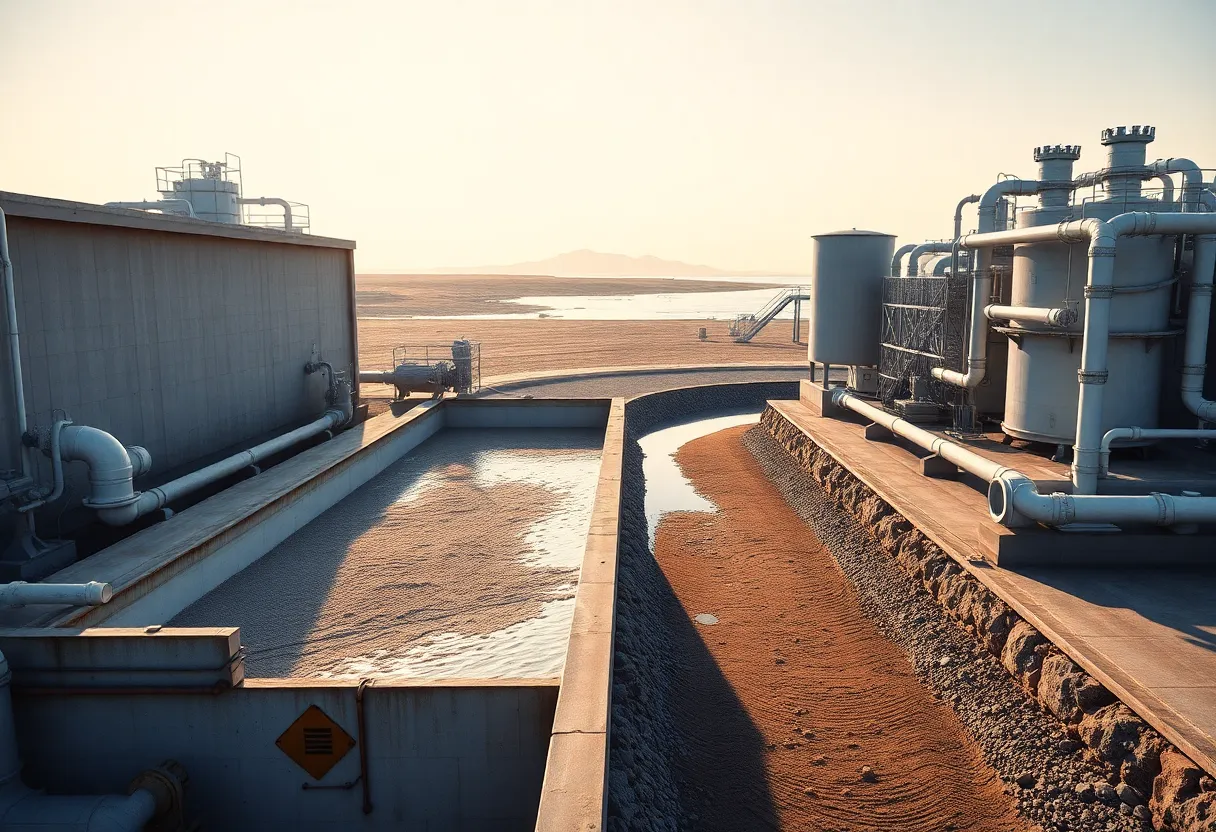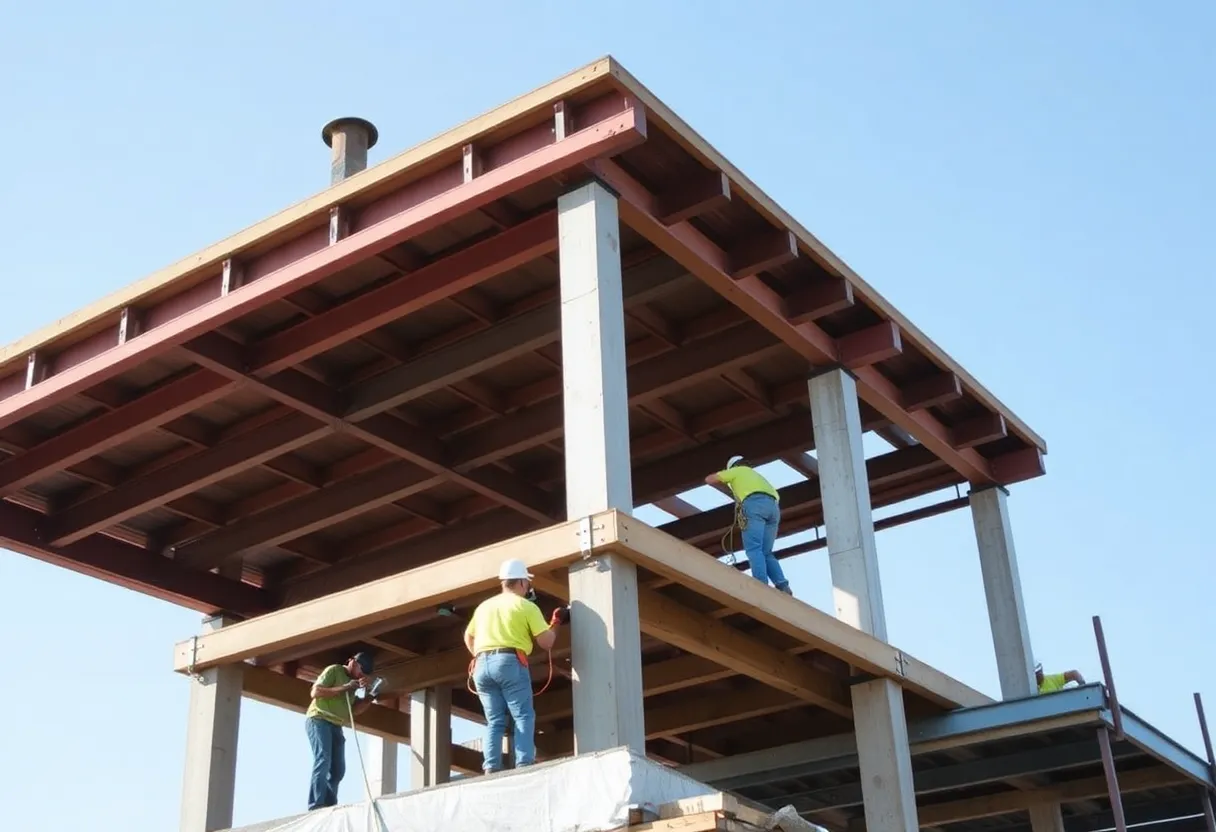Muscat, Oman, August 20, 2025
News Summary
Researchers and companies are advancing ultrasonic sea-sand desalination, a DAC-plus-desalination pilot, and a major financed desalination plant in Oman to secure materials and water for construction and industry. The ultrasonic device uses cavitation to reduce sand salt to 0.04% or lower while cutting water use compared with traditional washing. A pilot linking direct air capture with seawater desalination aims to remove about 1,000 metric tons of CO2 per year and produce fresh water. Separately, $130 million in financing was arranged for a 100,000 m³/day desalination plant west of Muscat to supply utilities and industry.
New technologies reshape water and sand supply for construction and industry
A new ultrasonic method for removing salt from sea sand, a pilot plan that links direct air capture with seawater desalination, and fresh financing for a large desalination plant in Oman are all moving forward as builders and heavy industry look for ways to secure materials and water while cutting environmental impacts.
What’s most important now
A research institute has developed an ultrasonic washing device that brings salt levels in sea sand down to industry safety limits while using far less water than conventional washing. At the same time, a startup and South Korean utilities have signed an agreement to test a combined direct air capture (DAC) plus desalination pilot that aims to produce fresh water and remove CO2 using desalination brine as a feedstock for carbon-trapping chemistry. Separately, financing has closed for a major desalination plant in Oman that will supply large volumes of water to utilities and industry.
Why this matters for construction
Shortages of river sand have pushed builders to consider sea sand as an alternative. River sand shortages stem from stricter environmental rules and years of overextraction. Sea sand can be abundant, but its high salt content poses a serious risk: residual salt accelerates corrosion of steel reinforcement inside concrete, which shortens structure life and raises safety and repair costs. A government guideline recommends keeping salt content below 0.04% for sand used as construction aggregate.
Ultrasonic desalination of sea sand
The new device uses ultrasonic energy to drive cavitation—microscopic bubble formation and collapse—that cleans particles without physical contact. Tests show the method reduces salt to 0.04% or lower while using much less water than traditional washing, which often requires about four tons of water per ton of sand. The ultrasonic process mixes sand and water at a 1:2 ratio and applies ultrasonic waves of roughly 300 W or higher for about three minutes. Results have been published in a peer-reviewed journal and the developers plan to scale the system to process larger volumes more quickly.
Integrated DAC and desalination pilot
A collaboration between a DAC startup and South Korean water and wastewater utilities aims to build a pilot facility that couples seawater desalination with carbon removal. The pilot will use desalination brine to extract materials that feed a liquid sorbent system; that sorbent reacts with CO2 to produce a stable mineralized form, while fresh water is produced as a byproduct. The pilot targets roughly 500 metric tons of atmospheric CO2 removal per year plus another 500 metric tons filtered from smokestack emissions, for a combined pilot capacity of about 1,000 metric tons per year. Construction costs for the pilot are estimated at $2–3 million, while a full commercial deployment could run into the $100–200 million range with much larger capture goals.
Observers note that both desalination and DAC are energy intensive. Because the pilot will be grid-connected, its near-term energy footprint is tied to the local power mix, which includes fossil fuels. That raises questions about net climate benefit and whether such projects could inadvertently support continued fossil fuel use. Proponents of the pilot argue it can serve multiple goals by supplying fresh water to industry and demonstrating ways to reuse brine.
Desalination finance and capacity in Oman
Financing has been arranged for a major desalination plant to be built in Oman. The project received about $130 million in finance, with roughly 70% expected from national export-import financing and local financial institutions and the remainder from a commercial bank. The plant will be located about 60 km west of Muscat and is designed to produce about 100,000 cubic metres of water per day. The company that will build and operate the plant for two decades expects significant long-term revenue from the scheme once it is online.
Broader context and trade-offs
These three developments reflect two linked pressures: shrinking river sand supplies for construction and growing industrial demand for reliable freshwater and decarbonization pathways. The ultrasonic sand desalination approach targets a direct construction-materials problem, promising lower water use and faster processing. The DAC-plus-desalination pilot focuses on industrial-scale water demand and experimental carbon removal pathways that reuse brine chemistry. Large desalination projects backed by international finance continue to expand water supply but also raise questions about energy use and long-term environmental footprint.
Next steps and outlook
The ultrasonic sand-cleaning method will need further scaling to handle the quantities demanded by construction markets. The DAC-desalination pilot will test technical and economic viability at small scale before any commercial build-out. The financed plant in Oman is slated to move into construction and operation under a two-decade operations plan. Together, these efforts suggest industry and researchers are pursuing multiple technical routes to manage scarce sand, meet water demand, and explore new carbon-management options—while balancing costs, energy use, and environmental trade-offs.
Frequently asked questions
What is the main benefit of ultrasonic sand desalination?
The main benefit is effective salt removal to meet construction safety limits while using much less water than traditional washing methods.
How much water does the ultrasonic method use?
The tested process mixes sand and water at a 1:2 ratio. Traditional washing can use around four tons of water for one ton of sand; the ultrasonic approach is designed to reduce that volume substantially.
Why combine desalination with carbon capture?
Combining the two can turn an industrial byproduct, desalination brine, into feedstock for carbon-trapping chemistry, potentially producing fresh water and stable mineralized carbon simultaneously.
Are these technologies energy intensive?
Both desalination and direct air capture require significant energy. When facilities are grid-connected, their greenhouse gas footprint depends on the local energy mix.
Will desalinated sea sand be safe for all concrete uses?
If salt levels are reduced to the recommended maximum of 0.04% or below, sea sand can meet safety standards for aggregate. Long-term durability still depends on construction quality and protective measures for steel reinforcement.
Key features at a glance
| Topic | Core detail |
|---|---|
| Ultrasonic sand desalination | 1:2 sand-water ratio, ~300 W ultrasonic energy, ~3 minutes; reduces salt to 0.04% or below; lower water use than traditional washing |
| DAC + desalination pilot | Pilot aims for 500 t atmospheric CO2 + 500 t smokestack CO2 per year; uses brine-derived feedstock for liquid sorbent; pilot cost ~$2–3M; fresh water as byproduct |
| Oman desalination project | Financing ~ $130M; ~70% from export-import and local institutions; planned output 100,000 m³/day; located ~60 km west of Muscat; 20-year operation agreement |
| Construction material context | River sand shortages driven by environmental rules and overextraction; sea sand is an alternative if desalinated to under 0.04% salt |
Deeper Dive: News & Info About This Topic
Additional Resources
- Scientific Reports: Ultrasonic sand desalination study
- Wikipedia: Desalination
- The Verge: DAC + desalination pilot (South Korea)
- Google Search: DAC desalination pilot South Korea
- Global Construction Review: Oman desalination plant financing
- Google Scholar: Oman desalination plant financing
- Smart Water Magazine: LG Chem $95M water treatment investment
- Encyclopedia Britannica: LG Chem water treatment
- MEED: Acciona signs Qatar 110 MIGD desalination contract
- Google News: Acciona Qatar desalination 110 MIGD
Author: Construction FL News
The FLORIDA STAFF WRITER represents the experienced team at constructionflnews.com, your go-to source for actionable local news and information in Florida and beyond. Specializing in "news you can use," we cover essential topics like product reviews for personal and business needs, local business directories, politics, real estate trends, neighborhood insights, and state news affecting the area—with deep expertise drawn from years of dedicated reporting and strong community input, including local press releases and business updates. We deliver top reporting on high-value events such as the Florida Build Expo, major infrastructure projects, and advancements in construction technology showcases. Our coverage extends to key organizations like the Associated Builders and Contractors of Florida and the Florida Home Builders Association, plus leading businesses in construction and legal services that power the local economy such as CMiC Global and Shutts & Bowen LLP. As part of the broader network, including constructioncanews.com, constructionnynews.com, and constructiontxnews.com, we provide comprehensive, credible insights into the dynamic construction landscape across multiple states.





